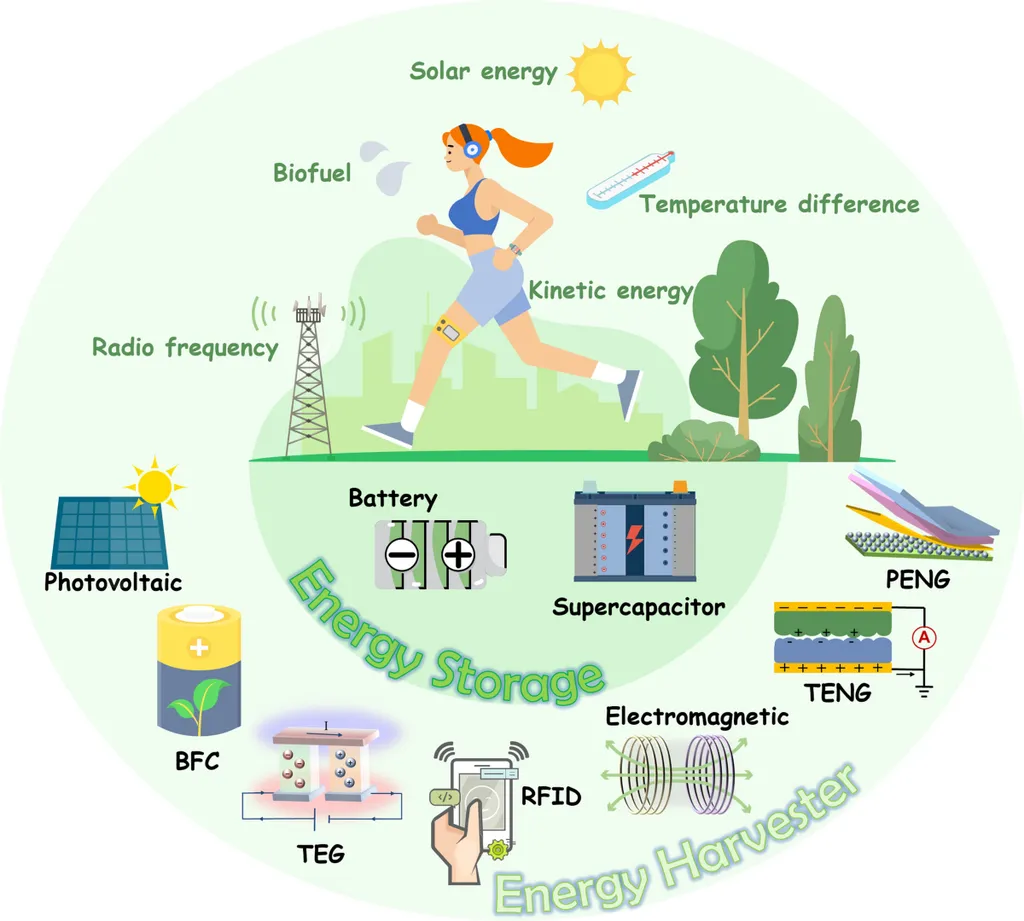Recent advancements in nanocomposite phase change materials (PCMs) are setting the stage for a revolution in flexible wearable electronic devices. Researchers led by Yan Gao from the Beijing Advanced Innovation Center for Materials Genome Engineering have developed a multifunctional material that not only manages thermal energy but also offers capabilities in microwave absorption, photothermal therapy, and electrical signal detection. This innovative approach, detailed in a recent article published in ‘eScience,’ could have significant implications for the energy sector and the future of wearable technology.
The team’s research focuses on integrating two-dimensional MXene nanosheets with one-dimensional carbon nanotubes (CNTs) and zero-dimensional metal nanoparticles to create a composite PCM that encapsulates paraffin wax. This multidimensional strategy results in a three-dimensional network that enhances the material’s thermal energy storage capacity and stability over time. “Our composite PCMs exhibit an exceptional photothermal conversion and storage efficiency of 97.5%, which is a game changer for energy management in wearable devices,” Gao emphasized.
One of the standout features of the PW@MXene/CoNi–C composite is its impressive microwave absorption capabilities, achieving a minimum reflection loss of -49.3 dB at 8.03 GHz. This characteristic positions the material as an ideal candidate for heat-related electronic applications, allowing devices to operate more efficiently while minimizing energy loss. The multifunctional nature of this PCM means it can simultaneously provide thermal management and electromagnetic shielding, which is crucial for protecting sensitive electronic components.
The potential commercial impacts of this research are profound. As wearable technology continues to gain traction in the market, the demand for materials that can efficiently manage heat and energy is increasing. The ability to integrate multiple functionalities into a single material not only simplifies device design but also enhances performance, making it a compelling choice for manufacturers looking to innovate in the competitive tech landscape.
Moreover, the implications extend beyond consumer electronics. This technology could find applications in medical devices, where photothermal therapy can be used for targeted treatments, and in smart textiles that adapt to environmental conditions. “Our design provides an important reference for the development of advanced flexible multifunctional wearable materials and devices,” Gao noted, highlighting the broader vision behind this research.
As the energy sector continues to evolve, innovations like those emerging from Gao’s team at the University of Science and Technology Beijing are paving the way for smarter, more efficient materials that could redefine how we interact with technology. The integration of advanced materials in everyday devices not only promises enhanced performance but also aligns with global trends toward sustainability and energy efficiency.
For more information on this groundbreaking research, you can visit the University of Science and Technology Beijing.




